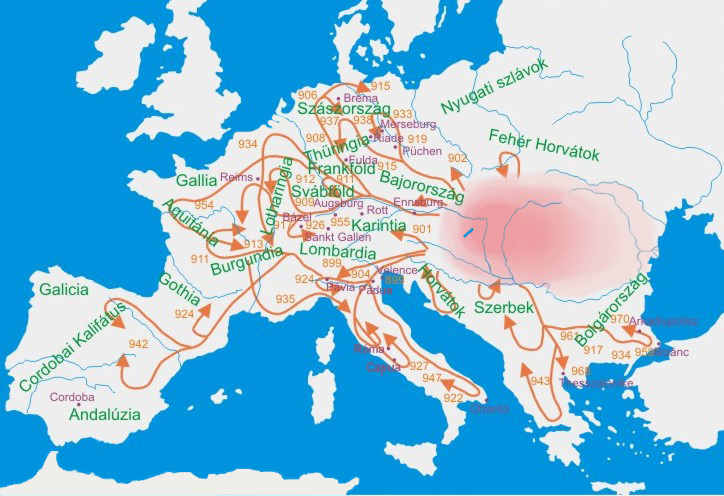
Hungarian politicians have recently attracted international attention with their fierce anti-refugee rhetoric. Apparently it’s all a matter of “saving Christian Europe,” and so on. More here or here. What’s surprising about this rhetoric are the references to “hordes” that are “invading” Europe. Hordes that invade was, I always thought, what Hungary was all about.
The Huns were one of the many tribes that overran Europe at the time of the fall of the Roman Empire. Most likely they came from the area north of the Caspian Sea, or possibly from Central Asia. It was Attila the Hun who made a proper country out of the marauding tribes and Hungarian nationalists have always been happy to invoke his legacy. “Attila” is still a popular name in Hungary today.
The eminent French Orientalist Joseph de Guignes suggested in his Histoire générale des Huns, des Turcs, des Mogols, et des autres Tartares occidentaux, 1757, that the Huns may have descended from the Xiongnu Confederacy, a nomadic tribe of the Central Asian steppes that made life difficult for the Han dynasty in China. Guines believed it was the Xiongnu pushing into Europe which triggered off the entire period of Völkerwanderung, the period of migration. Edward Gibbon, in his Decline and Fall of the Roman Empire, picks up this theme. Modern historians, however, are far more skeptical about these connections.
What is certain is that the Hungarians, in the 10th century, made life insecure for people throughout Europe, repeatedly making incursions into Central Europe, the Balkans, Italy and even the Iberian peninsula. See map above. They indeed were “invading hordes.” No, they were not Christian either.
It would have been funny if Orban, the Hungarian prime minister, had accused the refugees of being “Huns.” Well, he came close enough.



